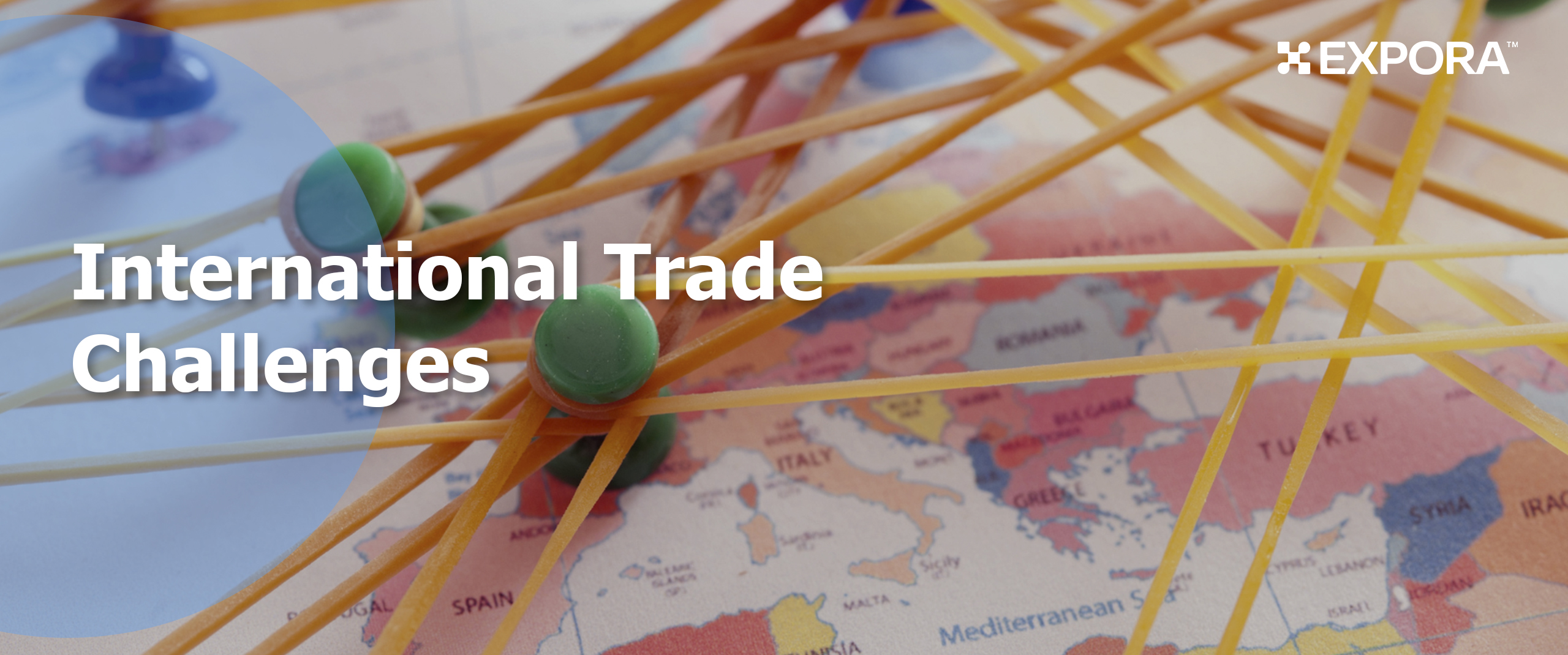Introduction In India, the majority of income comes from the agricultural sector. The nation ranks among the top producers of food items and agricultural goods worldwide. The growth rate of India’s agriculture sector predicted to be 3.5% in 2022–2023 and 3.0% in 2021–2022. In agriculture and related industries, the gross value added (GVA) increased by […]
Don’t Miss the Top 4 Challenges to International Trade in 2022
15 Feb, 2023

Trade and payments are vital to the growth of an economy. This facilitates the exchange of goods and services between different sectors and helps in balance of payments. Economic globalization and global trade have brought new expenses and increased competition.
Many challenges confront companies involved in export business, including currency fluctuations, tariffs and regulations, and logistics concerns. Businesses must partner with knowledgeable and experienced customs professionals who can help them navigate the complexities of import export businesses to mitigate the risks associated with these challenges.
Various sectors of the Indian economy are experiencing a shift as issues in exports from India have emerged with the surge of COVID-19. It has become increasingly challenging to keep up with the changes, and the companies need professional assistance. Indian businesses must overcome four significant obstacles to succeed in the export business.
Stagnation of Growth
Import and export decides the growth trajectory of any trading firm. Dividends and ROI of a firm are distributed equally amongst all its potential capacities, such as skill sets, export and import analysis, market fluctuations, and others.
Trade challenges often arise from unplanned growth or disruptive innovation. Such unplanned growth has disrupted the already declining sectors. As an example, over the past decade, India’s share of global apparel exports has remained at 3-4 per cent. This has made the apparel export sector face challenges in terms of growth.
Lack of Capital
Traditional trade had a high dependency on communication, but the availability of capital facilitates modern exports businesses. From the lowest rung to the highest level of the value chain, capital is the materialistic object that keeps firms isolated from global supply chain issues & challenges.
The Indian export sector can have a massive shift from its present scenario if the capital influx and access increase. For example, the leading supplier of capital to export credit agencies in India, i.e., EXIM bank, borrows 2-3$ billion annually. This doesn’t come as a surprise as the allocation from the fiscal budget is relatively less, given the export sector is rising in India.
The increase in trade wars between nations, which include retaliatory measures such as tariff changes, and phytosanitary measures, made capital availability even more rare. The export sector is facing increased interest rates on their loan requirements, as their existing loans could not be paid off.
Shortfall in Technological Advancement
Market advancement and its commensurate complexity have brought in multiple exports challenges. Such complexities can be either a boon or a curse. It all comes down to the convenience of the firms and enterprises in terms of their technological requirements and expertise.
Indian firms are very backward in terms of their technology adaptation. Industries like coal mining can easily use Artificial Intelligence to leverage the best out of the existing mines. Countries like US and Australia are far ahead of India in such usage. This has led to significant imports of coal needs rather than exports.
Technology can also be beneficial for many export industries as they can use technology to manage their order, process the manufacturing and what-not. With manual methods, exports are delayed, and they lack expertise in expediting the process.
Networking Shortages
A famous quotation by Tim Sanders dictates the modern trade, i.e., “Your Network is Your Net Worth”. Your network effectively and efficiently gives a birds’ eye view of your company’s presence in vast, extended areas. Connecting across industries becomes difficult. Having teams across multiple domains, even if unrelated, has been the trade experts’ solution to remote crises.
Food sector faces a significant gap in terms of networking. Large number of producers go through middle men to export their produce. This increases the prices for the end-users. Exports become segmented throughout the country since every producer does not have the capacity to export at high prices. This is one of the reasons for the poor integration of the Indian exports in the global supply chain.
How to Bridge the Gap with Seasoned Industry Players: EXPORA is Your Savior and Solution
Being an Industry expert, its quick turnaround time has been recognized across the export business domain. EXPORA will facilitate the trade barriers with innovative solutions. Want to know how? Read along.
- Scouting new buyers in new geographies while maintaining an experienced on-ground International Sales Team can spread the market base quickly. Such a portfolio will not widen reach and scope but also get the firm into quality connections. From digital marketing to packaging, name any, EXPORA is the answer.
- Access to the cheapest influx of capital at prices that makes firms jump right into an agreement with EXPORA is its USP. If the firms are facing issues in capital expenditure, revenue scouting or even Warehousing infrastructural needs, joining hands with the best is the solution to increase global footprint.
- Are you an export giant wanting to be abreast with technology? Equip yourself with sustainable solutions while growing at a fast pace? EXPORA is here with agile innovations. From Digital Cataloguing to in-house ERP, EXPORA stands tall. In a market of volatility, EXPORA can transform the international trade challenges into opportunities.
- Domain specialists and teams across a wide range of areas and functions make the firms perform without a halt. Building such a blended team with strategists and industry veterans confirms enterprises presence in the supply chain. Experts turn a small-sized business into a powerhouse of multi- billion-dollar consignments. Tech-first EXPORA offers many mining abilities from the market.
India’s Exporters Need EXPORA’s Experts’ Solutions and Advice
Trade barriers can be exhaustive, but they are also vital to the global economy. Sustaining means improving, and that comes with expert solutions and advice. Advice that ranks the firms from the rookie level into domain specialists in the market. This article looked at some of the challenges faced by businesses engaged in trade from an Indian perspective. For powerful insights into the world of exports and imports, join hands with the best in business, EXPORA. Reach out to us at contact@expora.in



